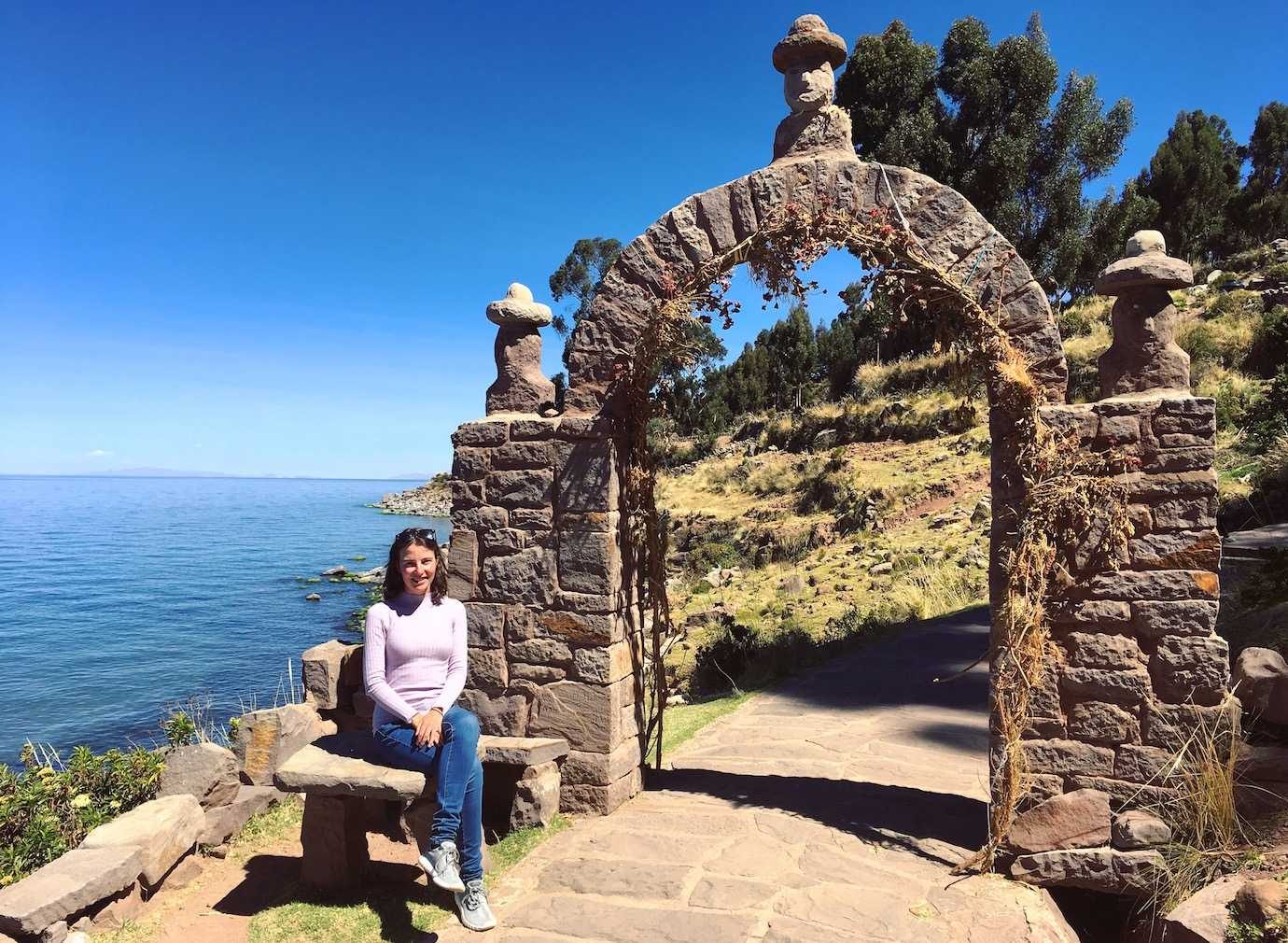
Split between Peru and Bolivia, vast Lake Titicaca is the highest navigable lake in the world and said to be the birthplace of the Incas. Our trip to Lake Titicaca marked both the end of our time in Peru and the start of our Bolivian journey.
You might be therefore wondering which is the best side to visit? The simple, although not entirely helpful, answer is it depends on what you’re looking for. Read on to find out what both sides have to offer as well as how to cross the border into Bolivia. Hopefully, by the end of this post, you’ll have a better idea of which side you’re after or perhaps it’s persuaded you to visit both.
Fun fact: Lake Titicaca translates as ‘grey’ or ‘stone puma’. This is apparently due to the fact that the lake is shaped like a puma – although seeing the likeness definitely requires the right perspective and a healthy dose of imagination!
Lake Titicaca – From Peru’s perspective
The main draws for Peru’s side of Lake Titicaca are the floating Uros Islands and beautiful Taquile island. To visit them, you’ll be based in Puno, Peru’s main town that lies on the lake’s shore.
Puno
As a destination, Puno’s attraction comes from it being a gateway to Lake Titicaca’s islands rather than necessarily what it offers as a town. Nevertheless, Puno does have things to do; wander and explore the town’s streets, head to the Plaza de Armas for Puno’s Baroque-style cathedral, and eat your first or last taste of Peruvian cuisine. You can also climb to several viewpoints for wonderful views over the lake.
We used our time in Puno to finally try the Peruvian delicacy that is guinea pig. I was slightly hesitant; on the one hand guinea pig is a must-try dish when in Peru, yet on the other hand eating guinea pig seemed too close to eating my family’s pet hamster. My curiousity and when in Peru thinking won and we ordered a guinea pig. I did make sure to order it sin cabeza (no head) as some restaurants serve guinea pigs with knitted hats – I’m not sure I could have handled that. Surprisingly, I really enjoyed guinea pig – similar in taste and texture to shredded duck and pulled pork.

How to get to Puno
Buses from Cusco to Puno run daily and have a journey time of around 6 hours. Having just hiked Rainbow Mountain, we caught the morning Cruz del Sur and arrived to Puno mid-afternoon. If you’re short on time or want to minimise travelling days, take the night bus from Cusco which will get you to Puno in time for the morning boat tours on Lake Titicaca.
Uros Islands
The floating Uros Islands are home to the Aymara speaking indigenous peoples of Lake Titicaca and have been for centuries. They are a group of unique manmade islands made from the reeds that grow in the water. As the reeds from the lower levels rot, more reeds need to be woven to add a new top layer. Walking on the islands, as we found out, therefore is an interestingly soft and springy experience.
Tours leave early in the mornings and it takes about 30mins by boat to reach the floating islands. Generally, the largest islands house up to ten families and have their own elected mayor. Between them, a rota is organised which tells the tours which island to visit on a daily basis.
A typical visit will involve the island’s mayor greeting you on arrival and local women welcoming you with a song. For part of the visit, you’ll be shown inside their homes and have the chance to learn more about their ways of life.
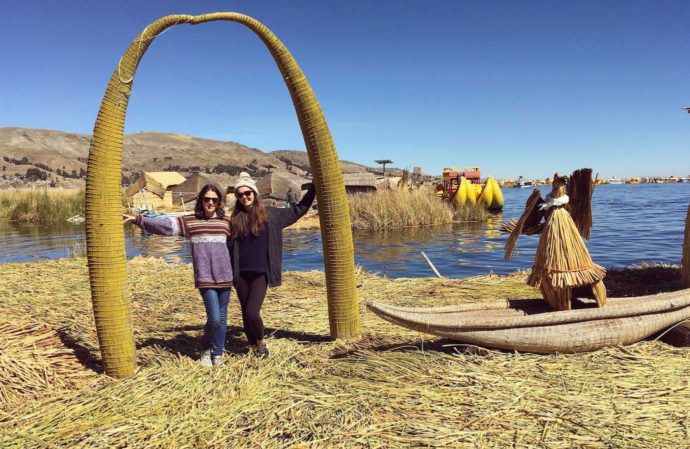
This will also be when the hard sell starts of their handicrafts. Personally, I felt quite uncomfortable sat in one of the lady’s home whilst she showed handicraft after handicraft, pressuring us to purchase. About half our group played game and bought some souvenirs, but there were definitely others like us who, because of their situation, didn’t buy anything and felt awkward about it.
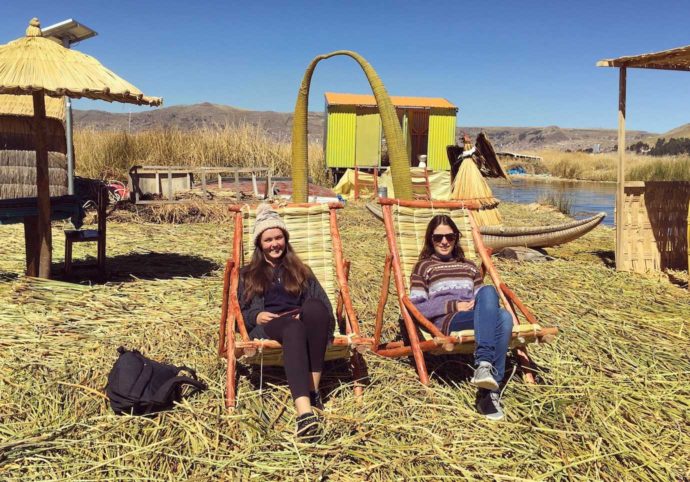
In general, the Uros Islands were a fascinating visit; however, it felt quite engineered and we did question how genuine everything was. Our experience was marred by the tourist trap situation of feeling uncomfortable and pressured into buying their souvenirs. I bought nothing and felt like an awful human.
Taquile Island
From the Uros Islands, it’s a further 2.5 hour boat journey across the lake to Taquile, throughout which we’d determinedly remained sat on the top deck in the strong winds and sunshine because when would we ever again be cruising across the highest navigable lake in the world! Sat inside, I think everyone else thought we were a bit weird.
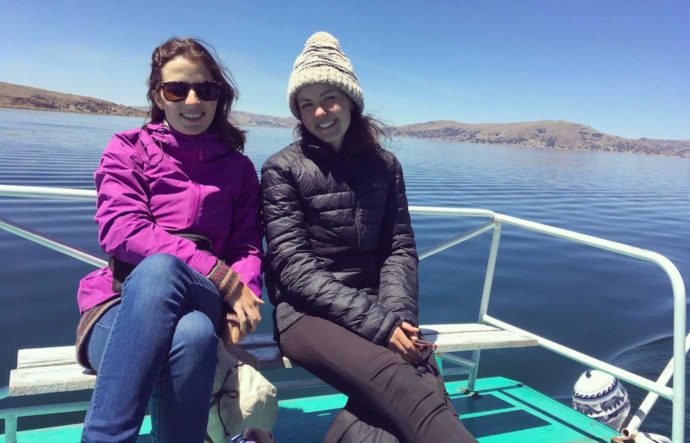
Stunningly beautiful, less touristy and so peaceful with echoes of a small Greek island, Taquile is a gem of a place and I loved it. With not a cloud in the sky, we were surrounded by endless blue dotted with the snowy Bolivian mountains in the background.
On arrival, it’s a steep walk up to the main square which can take longer than you think due to the altitude. Lunch was quinoa soup and delicious trout with rice and vegetables at a local restaurant with views overlooking the lake. We had an hour after lunch to explore before it was back down to the boat.
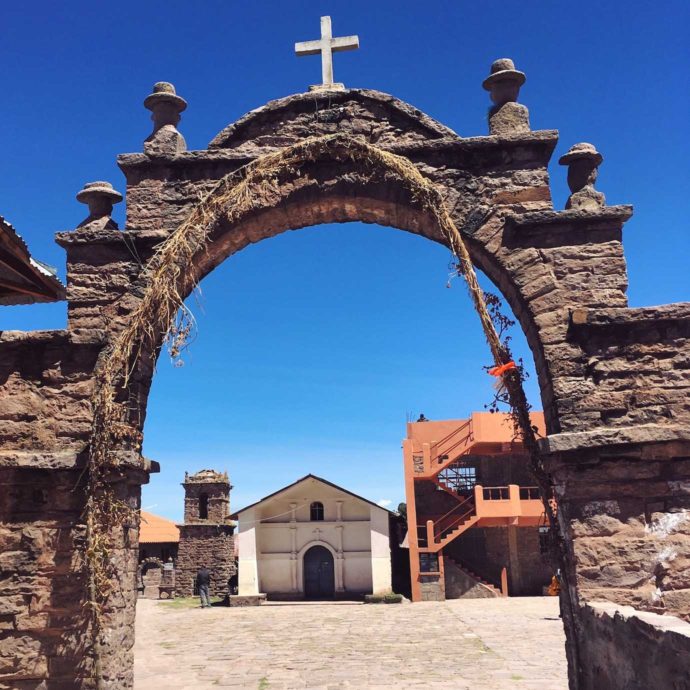
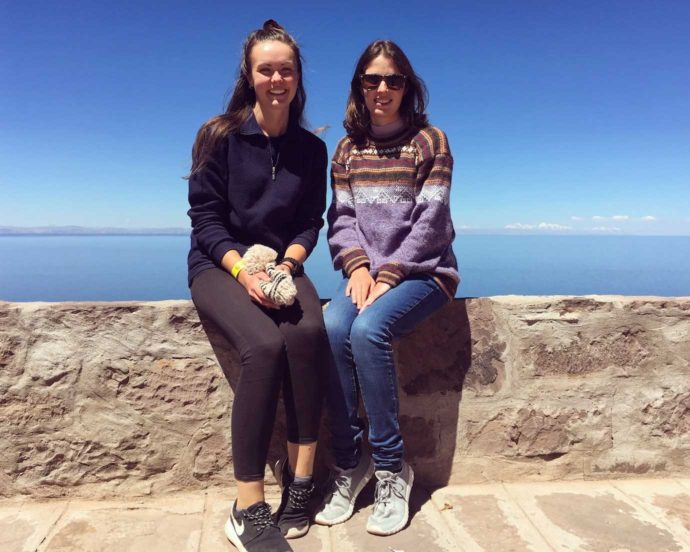
If anything the visit to Taquile was too short. I would have loved to stay longer so we could have walked further afield and appreciated the island’s incredible scenery. Taquile Island was definitely my Peruvian Lake Titicaca highlight, a worthy addition to anyone’s Titicaca experience.
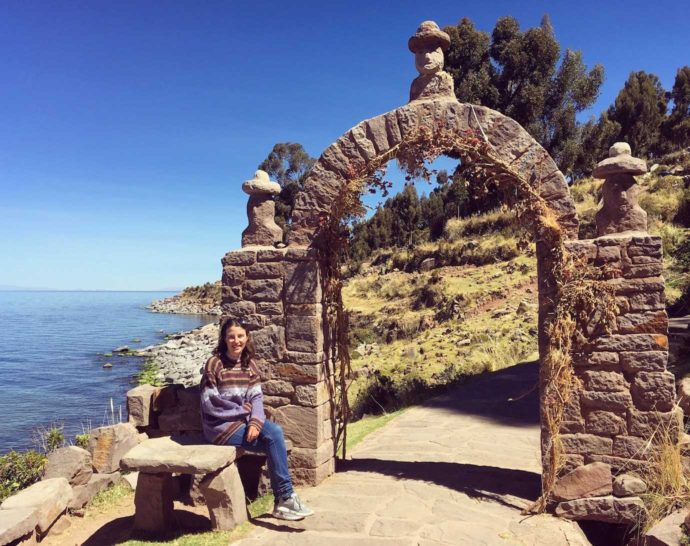
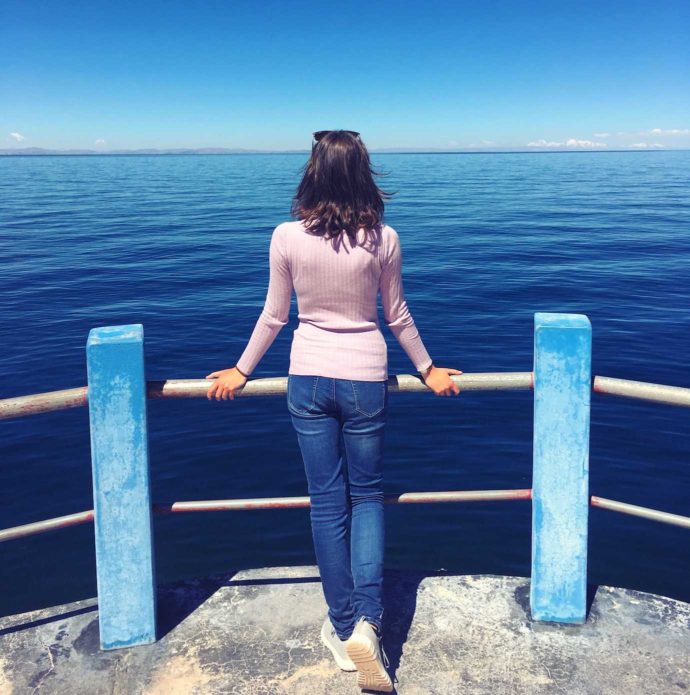
*A trip to the Uros Islands and Taquile cost us S/35 with lunch on Taquile included.
Crossing the border into Bolivia
Once you’ve explored Lake Titicaca’s Peruvian side, you’ll perhaps, like us, want to see the Bolivian side. First things first though, you’ll need to cross the Peru/Bolivia border. To cross the border, you can either do it independently, or go with a bus company like Bolivia Hop which helps you with the process. We chose the independent option and admittedly, I was slightly unsure as to how easy it would be. Turns out it was pretty easy and will go down on the record as a straightforward border experience.
Our border journey started in Puno at the Terminal Zonal Sur bus station (a little tricky to find). Once there, we caught a local combi (minivan) to Yunguyo. Generally speaking, combis don’t have specific departure times; they leave when they’re full which in the Yunguyo case worked out on average as every 20-30 minutes.
The drive to Yunguyo takes around three hours. We paid the driver a little extra to drive a little further and drop us at the border – it’s quite a normal occurrence for them. In total our combi ride cost us S/10. At the border, you’ll need to get a Peru exit stamp in your passport, then walk across into Bolivia where you’ll need to fill in a form and get an entry stamp. Being British made life a lot easier, we didn’t need to pay anything or have a visa etc like Americans do. If you’re American, make sure you know what documents/visas/payments are required.
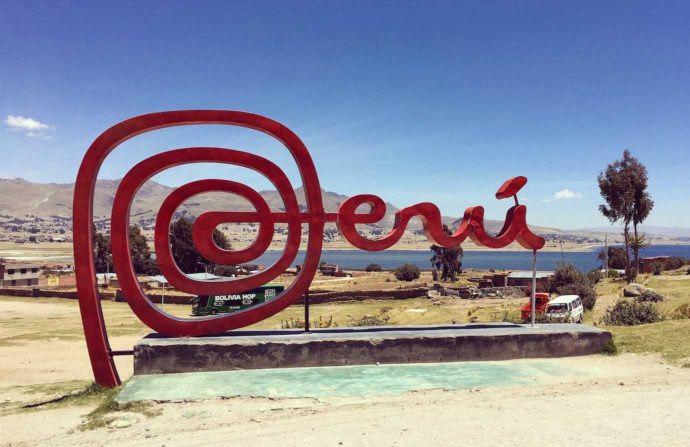
Leaving Peru and entering Bolivia
Good to know: Border opening times are from 8am-12pm and 2pm-7.30pm. For a two hour window in the early afternoon, they are technically closed. Although, whether they do actually close depends on the day and who’s on duty! We went for a mid-morning crossing so as not to chance it.
We then hopped onto another combi to Copacabana. And voila, there you have it – a simple border crossing. Honestly, the hardest part of crossing the border wasn’t even to do with the border. It was actually finding our hostel in Copacabana, which due to a wrongly tagged location in MapsMe led us on a bit of a wild goose chase and confusion as to why there was no hostel on the piece of land we were standing on!
Lake Titicaca – From Bolivia’s perspective
Copacabana
Copacabana is Bolivia’s main town on Lake Titicaca’s shore. It has a much more kicked back and relaxed vibe to Puno and is prettier.
After crossing the border, we spent our afternoon sat at a rooftop cafe with a banana milkshake enjoying the sun and the views over Lake Titicaca. Go to Copacabana’s main street, Avenida 6 de Agosto, for cafes, restaurants and tour agencies. There are also numerous food stalls along the lakefront, which although don’t look like much, serve amazing fish – especially trout!
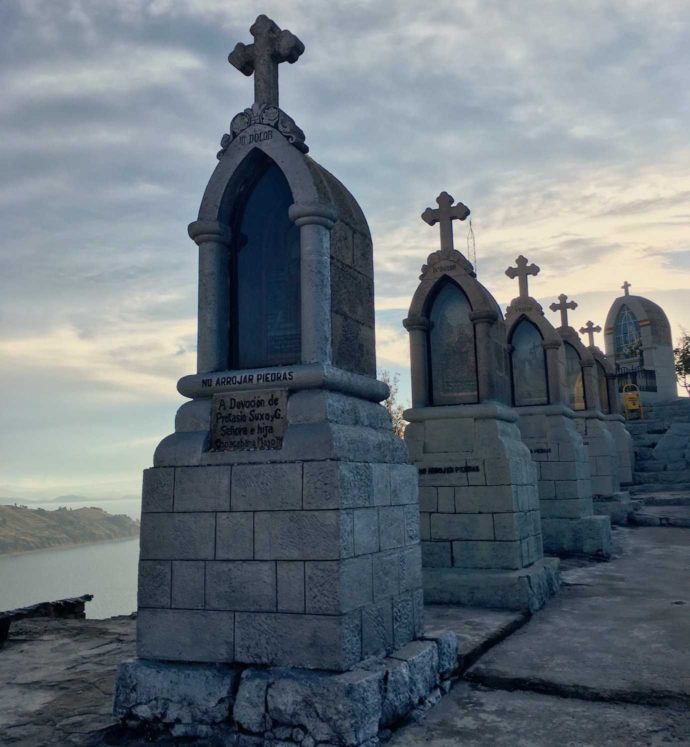
Stations of the cross at Cerro Calvario
When in Copacabana, don’t miss climbing to the top of Cerro Calvario and watching the sunset over Lake Titicaca. It’s a steep walk up cobbled and stone steps and takes around 30+ minutes. We gave ourselves an hour to reach the top so as not to miss the sunset! The climb is so so worth it; the panoramic views over Copacabana and the lake were beautiful and the sunset breathtaking.
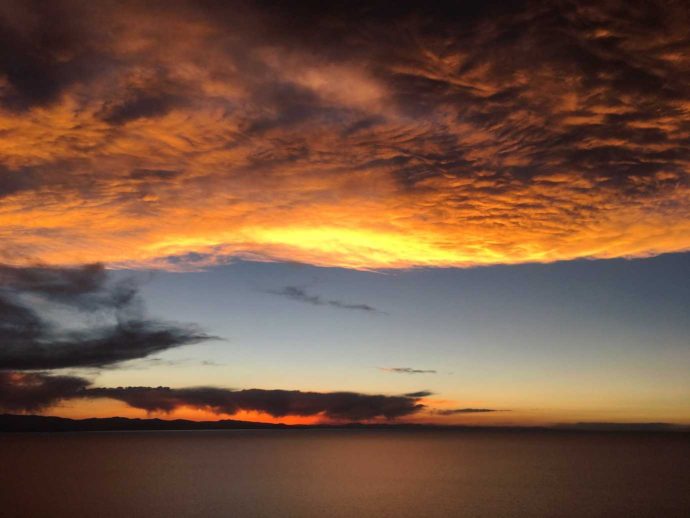
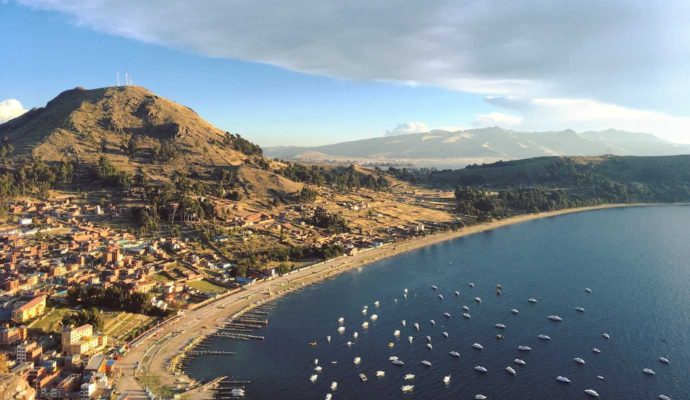
When the sun goes down, it does get dark fast. We were climbing down in the dying light and it was tricky at times. We did use our phone torches to help guide our footing and by the time we were down night had fallen.
Watching the sunset over the lake was the perfect way to spend our first night in Bolivia and kick off our time there.
Isla del Sol
We spent our second day in Bolivia visiting the gorgeous Isla del Sol, believed to be the birthplace of the Incas’ Sun God.
Originally, we’d planned to overnight on Isla del Sol so we could explore the whole island. However, when booking a boat we found out that the dispute between the North and South communities was still ongoing and, consequently the North of the island was off limits. We subsequently amended our plans, only going for a day. It’s worth checking out the situation in Copacabana before you go. If you’re only going for a day, catch the morning boat so you have more time to explore once there. The boat ride takes around 2 hours, it’s not far yet the boats are slow!
Like Taquile Island, Isla del Sol is beautiful, peaceful with stunning views. On arrival, we paid an entry fee (Bs 5) and headed off to explore. We walked to two miradors and I have to say it again, the views were amazing! We were lucky to be there on a clear blue sky sunny day, the blue of the lake and sky is striking and endless. It was a shame the North was out of bounds, I would have loved to explore the island more.

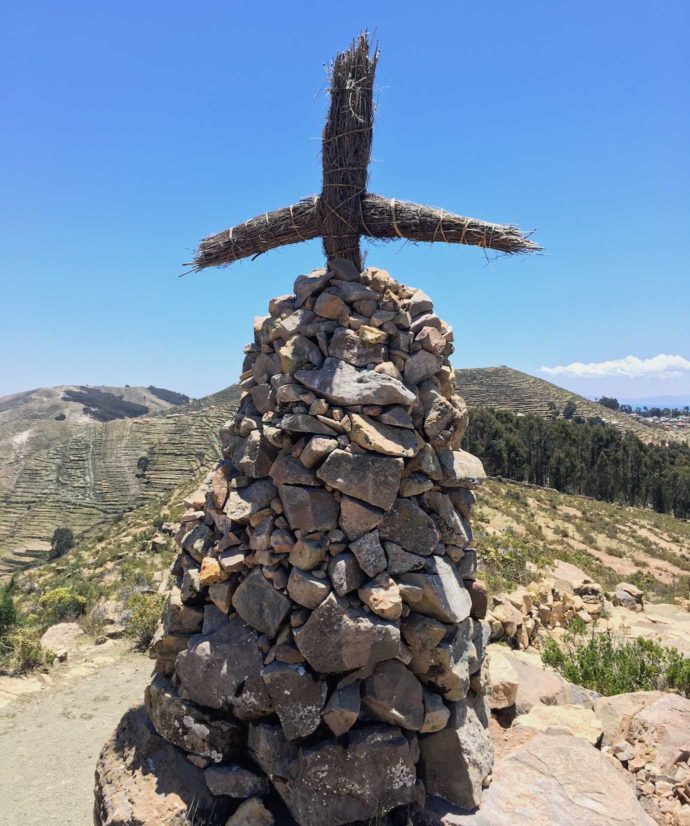
Tip: The island is high, 4100 metres at its peak, and there are plenty of steep ascents so be prepared to feel short of breath and take the walking slow.

Lots of steep steps!
From Copacabana to La Paz
Heading on to La Paz from Copacabana is an extremely popular journey and very easy to do. Buses depart Copacabana for La Paz throughout the day. We arrived back to Copacabana at 4.30pm from our visit to Isla del Sol and after a quick dash to collect our backpacks from the hostel, we managed to buy tickets and catch the 5pm bus to La Paz. There are so many buses going to La Paz, you won’t be short of choice.
About an hour into the journey, you will be asked to get off the bus. We were confused by this and, despite asking why, explanations weren’t hugely forthcoming. What we didn’t know was that we had arrived at the Tiquina Strait, the passage that connects the larger and smaller parts of Lake Titicaca in Bolivia, that you have to cross to get to mainland Bolivia. I hadn’t known the strait even existed.
We had to buy a ticket (Bs 2) before boarding a tiny boat to bumpily transport us to the other side whilst the bus crossed the strait on a wooden barge of sorts. This experience definitely came out the blue. Back on dry land, it was onwards to La Paz with no more surprises, aside from the insane amount of traffic and length of time it takes to get into La Paz’s city centre. Crazy!
Final thoughts on Lake Titicaca
If you’re tossing the coin between Lake Titicaca’s Peruvian or Bolivian side, it’s not an easy choice and depends on what you’re interested by. Personally, I wasn’t fussed by Puno and much preferred Bolivia’s prettier Copacabana which had a more relaxed vibe.
That said, if the Uros Islands are a must-see then it’s the Peruvian side you’re after. Personally, I found the Uros Islands underwhelming and didn’t enjoy the tourist trap feeling surrounding the place. Being pressured into buying handicrafts sat uncomfortably with me and it did put a downer on the whole floating islands visit.
I much preferred and would recommend Peru’s Taquile and Bolivia’s Isla del Sol. If time is of the essence, Peru’s Taquile Island and its Bolivian counterpart, Isla del Sol, are quite similar, so visiting one will give you a taste.
However, if you’re backpacking and crossing the border anyway, a visit to both sides of the lake doesn’t take long and can be done in two days.
Have you been to Lake Titicaca? Did you visit both sides? Did you feel uncomfortable on the Uros Islands?